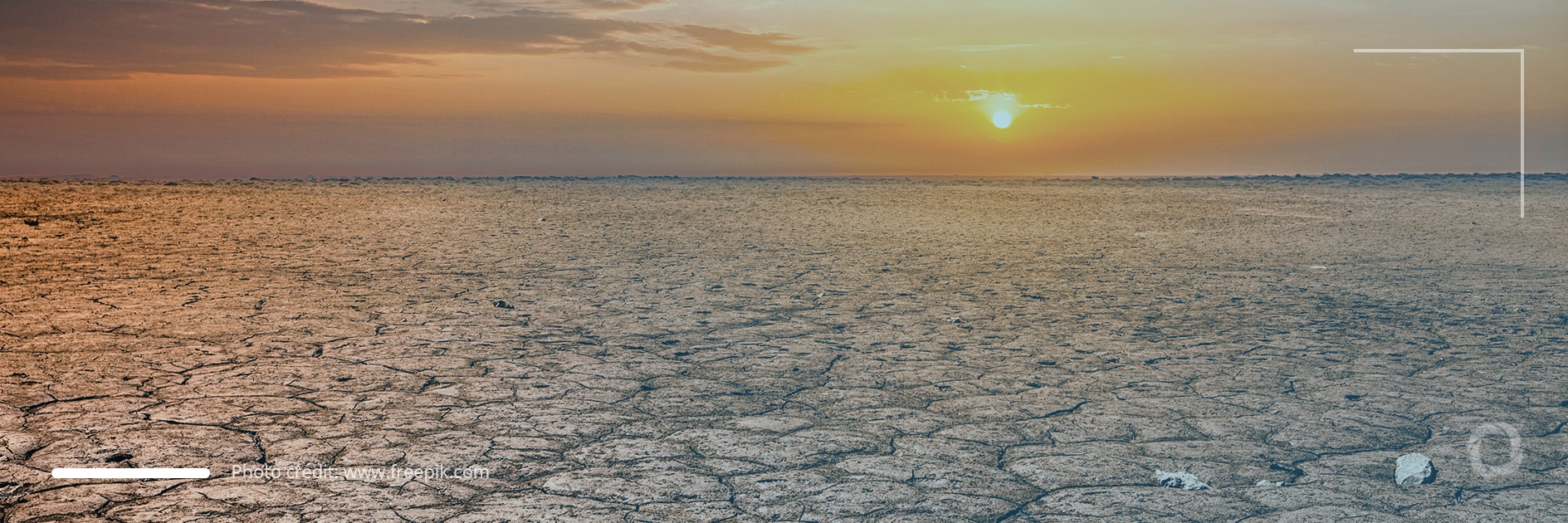Humanity has very little time left to take firm action to halt global warming which is the only way to prevent a worldwide catastrophe, the most extensive report on climate change has warned. The report, published by the UN Intergovernmental Panel on Climate Change (IPCC), highlights that with the global temperature already having increased by about 1.07 degrees C, the chances of the world being able to avoid the 1.5 degrees C scenario are practically zero. The report also noted that although the near future will certainly be hotter, it will depend on humankind how hot it will become.
Those responsible for the looming climate crisis, which has been already manifested itself destructively on numerous occasions, is humankind via activities that generate billions of tons of greenhouse gas emissions annually, the report’s authors said. Most climate change-triggering actions are already irreversible, particularly those that have occurred in oceans, ice sheets, and global sea levels, they highlighted. Therefore, regardless of any action taken, the 1.5 degrees scenario will most likely be reached within the next two decades and, unless consistent actions are taken, it may even reach 2 degrees Celsius by 2050.
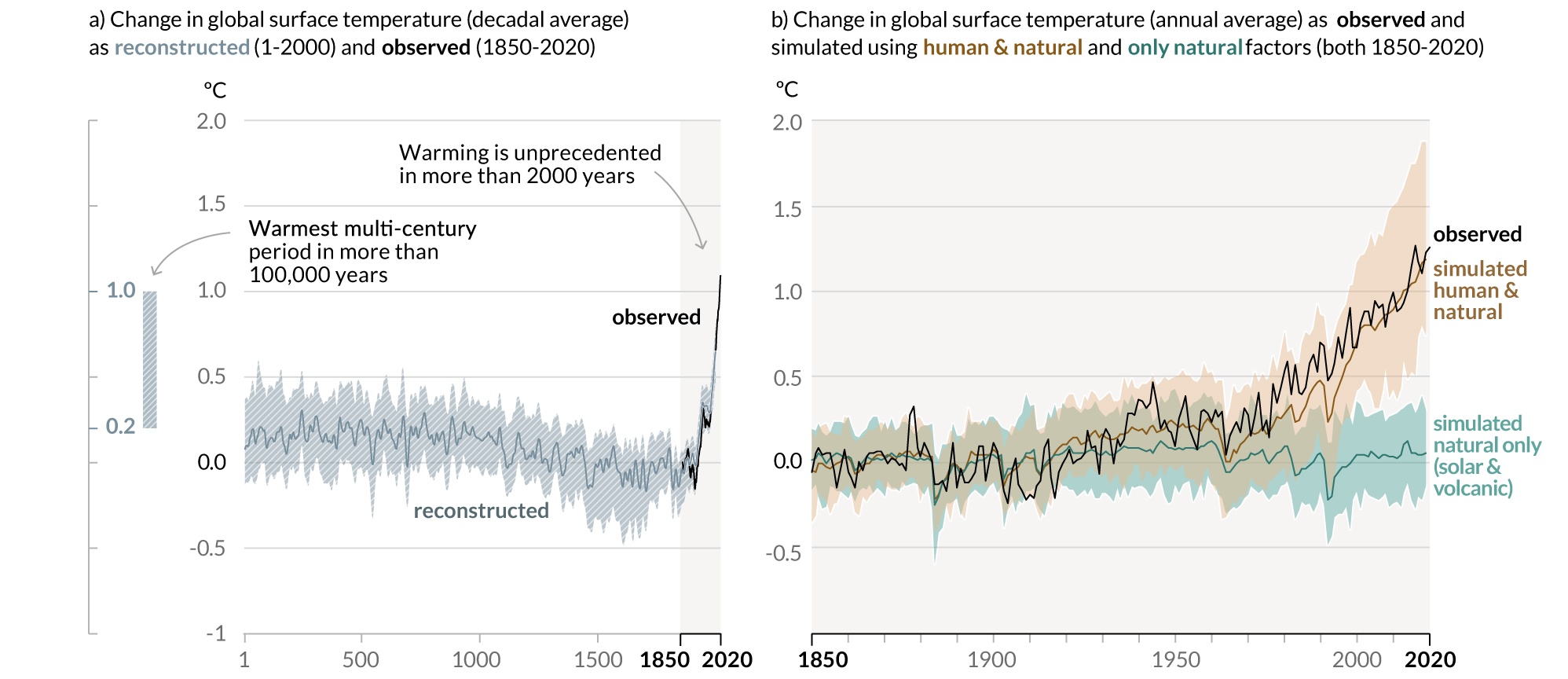
The good news is that climate change can still be stopped if zero net gas emissions are reached by 2050. In such a scenario the global temperature would start to decrease around 2100.
Describing the report as “code red for humanity”, UN Secretary-General, Antonio Guterres, called for action, saying:
“The alarm bells are deafening, and the evidence is irrefutable: greenhouse gas emissions from fossil-fuel burning and deforestation are choking our planet and putting billions of people at immediate risk. Global heating is affecting every region on Earth, with many of the changes becoming irreversible.”
Five climate scenarios
Under the most optimistic scenario, global CO2 emissions could be cut to net zero around 2050. If this is the case, global warming is estimated to stand at about 1.6 degrees C above the 1850 level and by 2100 it should stabilize at about 1.4 degrees C. This is the only scenario under which the goals of the Paris Agreement can be met.
Under the second scenario, global greenhouse gas emissions are cut significantly but reach net-zero only after 2050. In this case, global warming is estimated to stand at about 1.7 degrees C in 2040-2060 and by 2100 it should stabilize at about 1.8 degrees C.
The third scenario considers the situation when the amount of CO2 emissions remains at the current level by 2050 and the world fails to reach net-zero emissions by the end of the century. In this scenario, temperatures are estimated to rise to 2 degrees C in 2040-2060 and reach 2.7 degrees C by 2100.
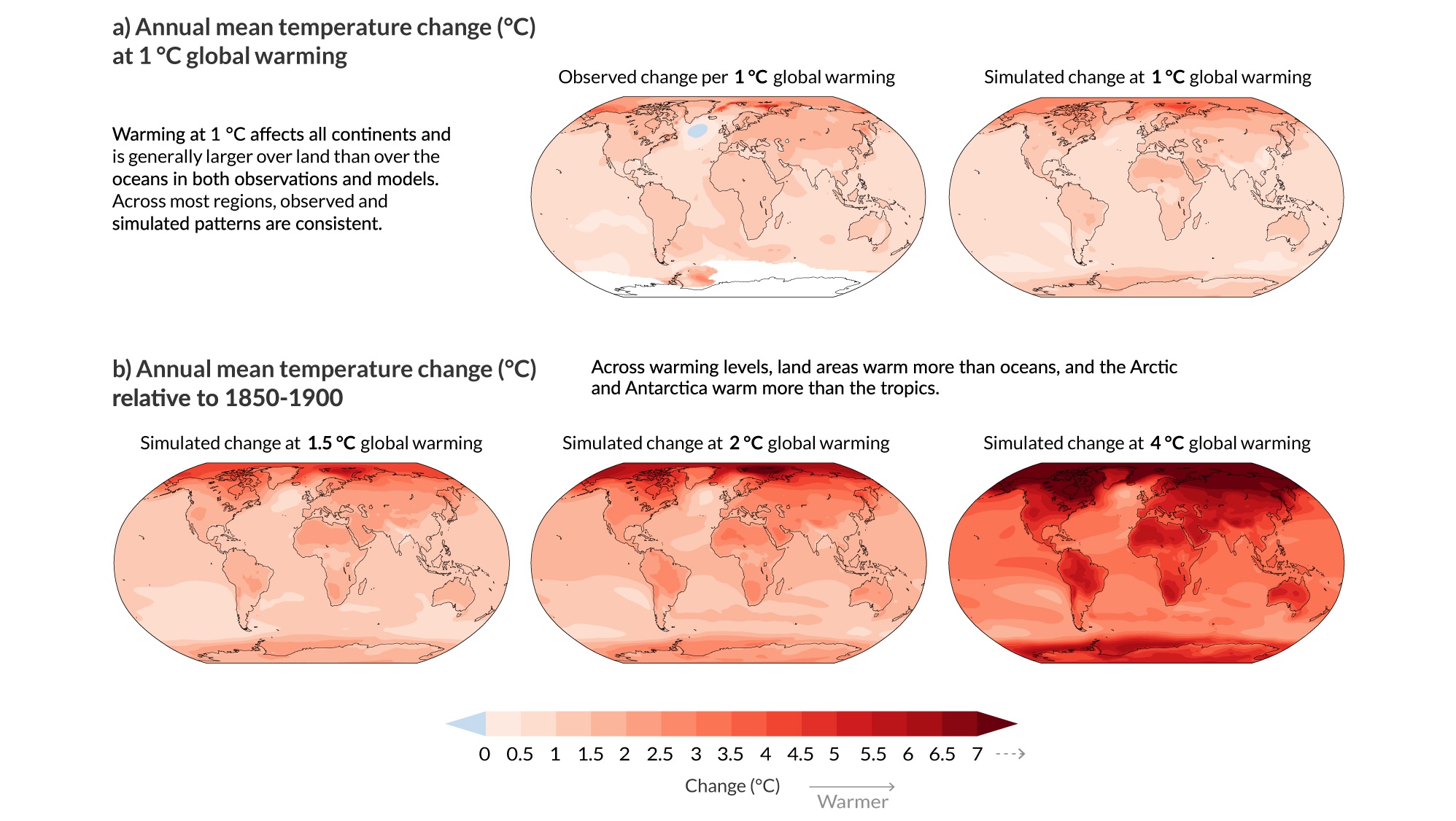
The fourth scenario focuses on the situation when greenhouse gas emissions continue to rise and to almost double by 2100 compared to the current level. If such a scenario comes true, temperatures are expected to rise to 2.1 in 2040-2060 and reach 3.6 degrees C by the end of the century.
The fifth is the worst possible scenario whereby the global temperature is estimated to increase to 1.6 degrees C by 2040, already amount to 2.4 degrees by 2060 and reach a dreadful 4.4 degrees C by 2100.
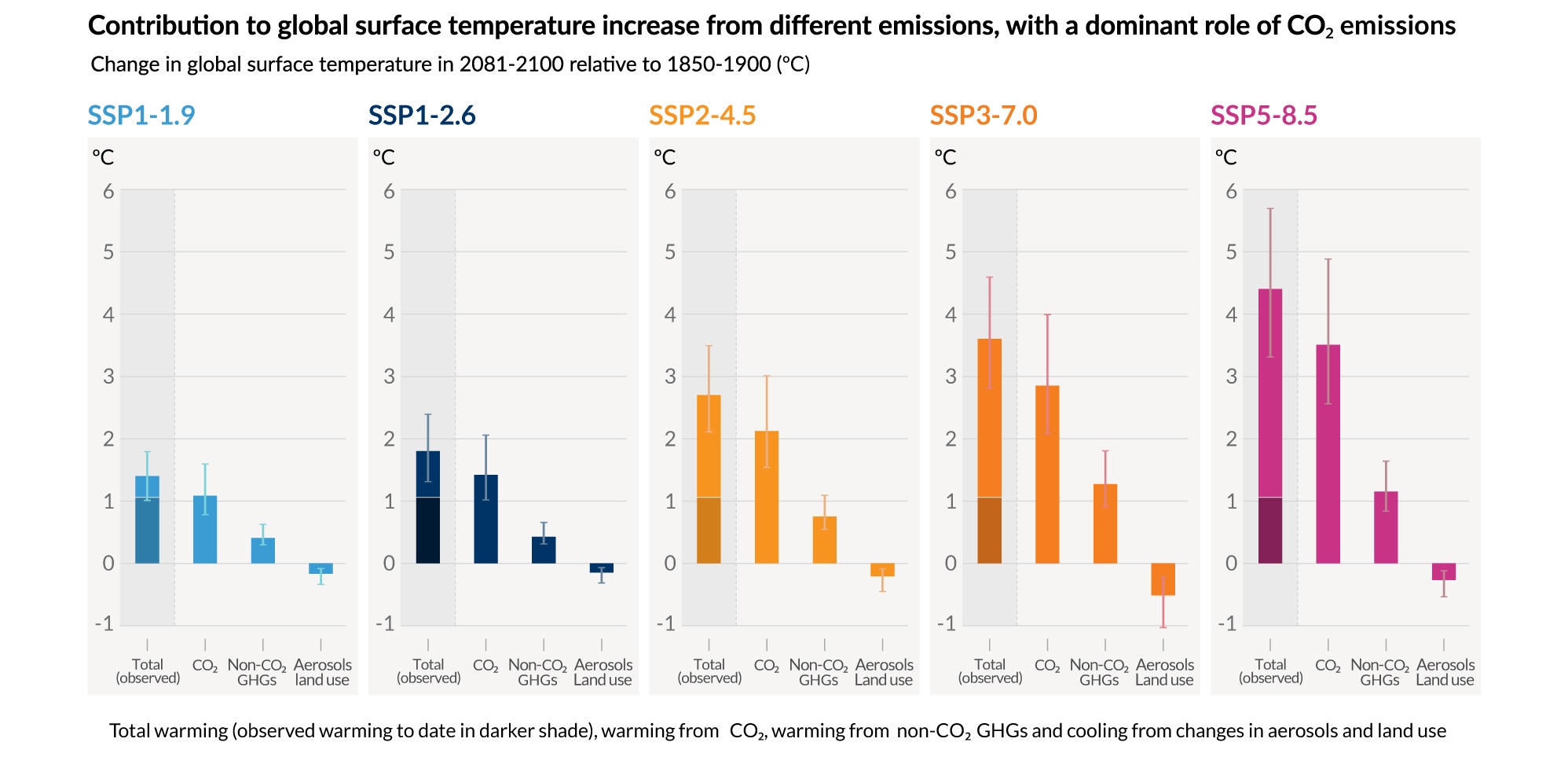
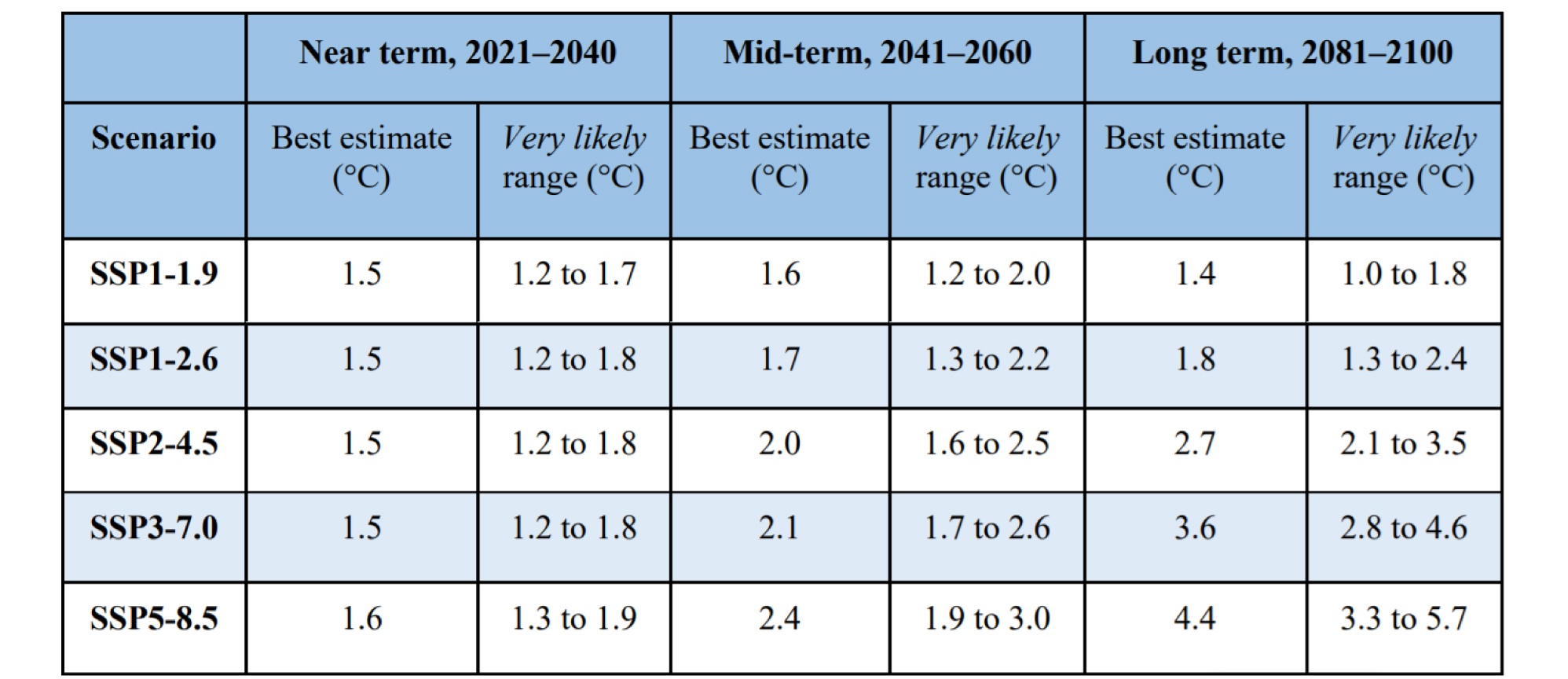
Scientists have warned that changes will definitely affect the whole planet and a risk assessment also includes the potential of extreme phenomena such as the collapse of ice sheets or abrupt ocean circulation changes.
“If we combine forces now, we can avert climate catastrophe. But, as today’s report makes clear, there is no time for delay and no room for excuses,” UN Secretary-General Antonio Guterres said in his statement.
There is still hope
Although the report paints a rather gloomy picture, its authors have stressed that humanity can still combat global warming by rapidly and radically cutting greenhouse gas emissions to reach zero net by 2050. These include carbon dioxide and the much more harmful methane that has a 100-year global warming potential, 28-34 times that of CO2. They added that cutting emissions will not only allow humanity to curb climate changes but it also results in cleaner air and thus a reduction in airborne diseases.
Guterres pointed out that it is up to the world’s leaders to change the situation.
“The viability of our societies depends on leaders from government, business and civil society uniting behind policies, actions and investments that will limit temperature rise to 1.5°C. We owe this to the entire human family, especially the poorest and most vulnerable communities and nations that are the hardest hit despite being least responsible for today’s climate emergency,” he said.
Guterres called on all nations, especially the G20 and other major emitters, to come with “credible, concrete and enhanced nationally determined contributions and policies” aimed at cutting gas emissions before COP26 which is due to take place in October-November this year in Glasgow.
In 1950, the world emitted 6 billion tons of CO2. By 1990 the figure already stood at 22 billion tons only to reach 33-36 billion tons per year since 2010. Over the past 50 years, global air temperatures have risen faster than ever and the past five years have been the hottest since 1850.
About the report
The IPCC report is the first of a complete three-part IPCC publication. The second report regarding climate change mitigation will be issued in March 2022 and the third covering climate change adaptation will be released in October 2022. The current report was prepared by AR6 Working Group I which is comprised of 234 authors from 66 countries plus 517 contributing authors. The publication is based on a review of 14,000 scientific papers on climate change. The IPCC is an independent and apolitical body where scientists voluntarily contribute to three working groups preparing reports on climate changes to support global leaders to deal with global warming.
